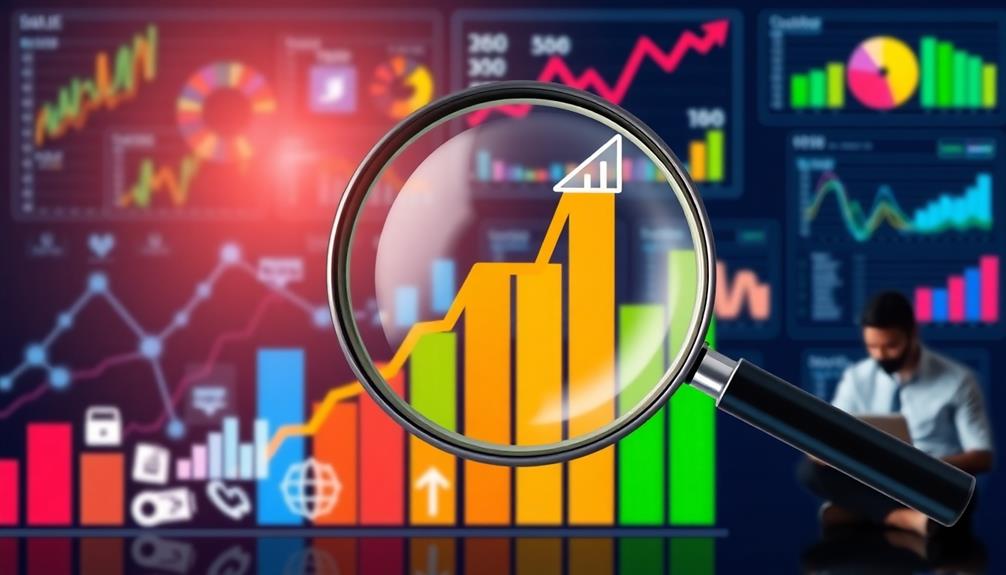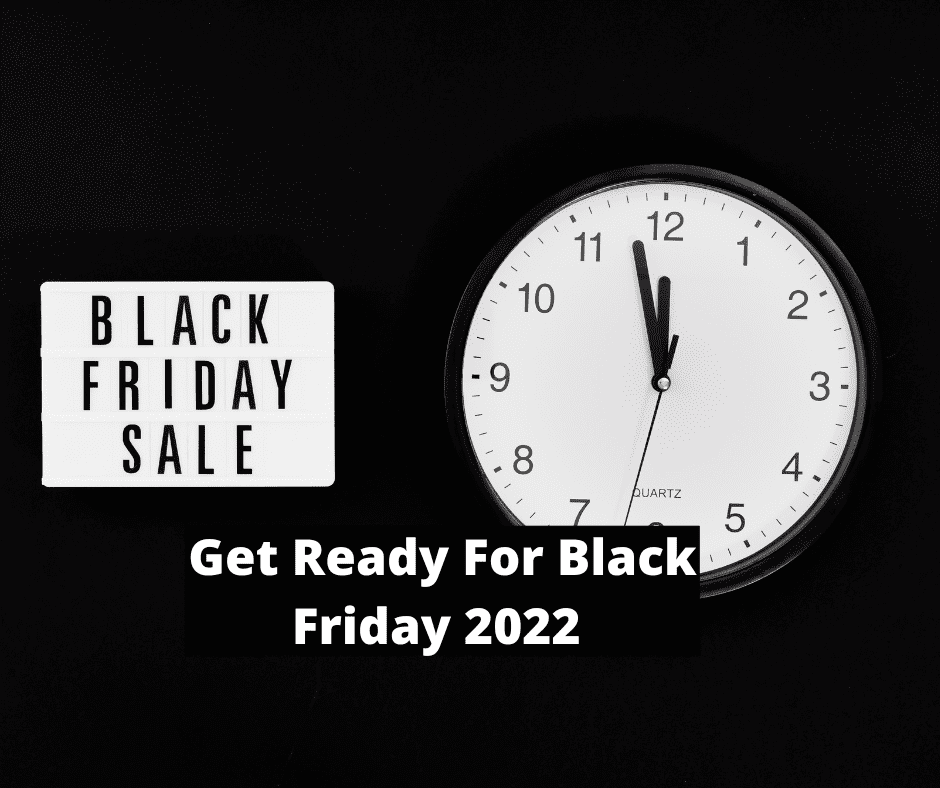To optimize your marketing strategy with data, start by establishing a solid data infrastructure. Use advanced BI tools for real-time monitoring, turning raw data into actionable insights. Focus on precise audience engagement by leveraging data for effective segmentation and targeting during critical micro-moments. Regularly measure campaign performance through KPIs to keep your strategy on track. Finally, implement continuous improvement by conducting A/B tests and maintaining a feedback loop to enhance customer satisfaction. These steps can greatly boost your campaign effectiveness. There's plenty more to explore that could help elevate your strategy even further.
Key Takeaways
- Establish a solid data infrastructure to streamline data management and enhance credibility in marketing strategies.
- Utilize advanced BI tools for real-time data monitoring, transforming raw data into actionable insights for quick decision-making.
- Optimize audience engagement through precise segmentation and real-time performance monitoring, adapting strategies based on consumer behavior.
- Personalize engagement strategies by leveraging micro-moments and AI-driven solutions for tailored content delivery that enhances conversion rates.
- Implement continuous improvement through regular data audits, A/B testing, and feedback loops to refine strategies and optimize campaign effectiveness.
Establish a Data Infrastructure

In today's data-driven world, establishing a robust data infrastructure is essential for any effective marketing strategy. A well-organized data infrastructure serves as the backbone for your data-driven marketing strategy, enabling you to collect, store, and manage data effectively.
Start by conducting thorough audits to identify all data sources, ensuring you don't overlook valuable information that can enhance your marketing decisions. High-quality content, which enhances credibility and user retention, can also be informed by a solid data foundation, allowing you to create more relevant and engaging material importance of content quality.
Investing in high-quality data infrastructure not only improves accessibility but also enhances informed decision-making. When you have a clear overview of marketing performance and customer insights, you can tailor your strategies for better results.
For example, Keenfolks successfully integrated over 35 different accounts into a single platform for Kellanova, showcasing how streamlined data management can optimize efforts.
Moreover, consider implementing scalable data systems. As your data needs grow, these systems can adapt without compromising data quality or accessibility. This flexibility is vital in a rapidly evolving market.
Utilize Advanced BI Tools

To truly optimize your marketing strategy, you need to harness advanced BI tools that offer real-time data monitoring and enhanced data visualization.
These tools turn raw data into actionable insights, enabling you to make quick, informed decisions. By leveraging these capabilities, you can effectively track campaign performance and adjust your strategies on the fly.
Additionally, AI enhances targeting and segmentation for small businesses, allowing for more precise marketing efforts and ultimately driving better engagement and conversion rates through AI-driven insights.
Real-Time Data Monitoring
Real-time data monitoring is revolutionizing how marketers approach their strategies, enabling you to make swift, informed decisions. By implementing advanced business intelligence (BI) tools, you can track key performance indicators (KPIs) in real time, ensuring your data-driven decisions are based on the latest campaign performance insights. This approach aligns with the key principles of DevOps, emphasizing continuous feedback loops and collaboration to enhance decision-making.
A centralized BI Command Center aggregates data from multiple sources, streamlining data management and improving your marketing strategies.
With real-time dashboards, you'll spot trends and anomalies quickly, allowing you to adjust your campaigns on the fly and optimize performance. The advanced analytics capabilities within BI tools transform raw data into actionable insights, enhancing your ability to evaluate marketing effectiveness. This also helps you allocate budgets efficiently across various media channels.
The speed and accuracy of data analysis processes improve considerably with BI tools, leading to a remarkable 35% increase in campaign effectiveness, as seen with Kellanova's centralized BI platform.
Enhanced Data Visualization
By leveraging advanced Business Intelligence (BI) tools, you can markedly enhance data visualization, making it easier to track and analyze key performance indicators (KPIs). These tools transform raw data into interactive dashboards that provide a clearer understanding of your marketing performance metrics. This clarity helps you develop more targeted strategies that align with your marketing objectives.
Additionally, utilizing high-quality content enhances credibility and trustworthiness, which is essential when interpreting data insights.
Implementing a centralized BI Command Center allows you to integrate data from multiple sources seamlessly, improving accessibility and offering a cohesive view of campaign performance. With real-time analytics, you can quickly identify trends and patterns, enabling you to pivot your strategies based on up-to-date performance data.
Enhanced data visualization empowers your team to communicate collaborative insights efficiently, fostering alignment across departments. When everyone can see the same data visualizations, it becomes easier to discuss marketing performance and make informed decisions swiftly.
This approach not only streamlines data analysis but also enhances teamwork, ensuring everyone is working towards the same goals. Ultimately, the right BI tools can transform how you visualize data, leading to improved marketing outcomes and a more agile strategy.
Actionable Insights Generation
In today's fast-paced marketing landscape, leveraging advanced Business Intelligence (BI) tools is essential for generating actionable insights. These tools enable real-time data analysis, allowing you to swiftly adapt your strategies based on current performance metrics and trends.
Leveraging insights from AI-driven solutions, such as those developed through Deloitte's AI Expertise and Partnerships with NVIDIA, can further enhance your marketing effectiveness. By implementing a centralized BI Command Center, like Kellanova did, you can facilitate thorough monitoring of key performance indicators (KPIs), ensuring that your marketing campaigns are informed and effective.
Advanced BI tools enhance data visualization capabilities, transforming complex datasets into clear insights that drive strategic decisions. When you integrate multiple accounts into a single platform, you improve data accessibility and management, streamlining your marketing operations.
This robust approach addresses common challenges of disorganized data, enabling you to allocate budgets efficiently across effective media channels.
Optimize Audience Engagement

Effective audience engagement is essential for maximizing your marketing strategy's impact. By leveraging data insights, you can achieve precise audience segmentation, tailoring your campaigns based on demographics and behaviors. This targeted approach can boost your campaign effectiveness by up to 35%, as shown by Kellanova.
Additionally, fostering emotional connections through shared experiences can enhance the effectiveness of your marketing efforts by creating a more relatable brand image.
Real-time performance monitoring allows you to adjust budgets across effective media channels, enhancing your marketing efficiency and overall engagement. Using customer journey mapping, you can pinpoint key micro-moments for targeted outreach, delivering personalized content that resonates with your audience.
Implementing data-driven approaches based on behavioral data can greatly elevate your engagement rate. Kellanova's strategy achieved an impressive 78% targeted engagement rate by focusing on personalized marketing strategies.
To keep track of your success, monitor key performance indicators (KPIs) to assess your campaigns' effectiveness continuously. Utilizing advanced data and business intelligence tools will enhance your data analysis and visualization capabilities, enabling you to make informed decisions based on current performance.
Activate Micro-Moments

To make the most of micro-moments, you need to pinpoint key opportunities in your customers' journeys.
By understanding what they want to know, do, or buy right when they need it, you can tailor your engagement strategies.
Implementing advanced technologies similar to those seen in Intelligent Tutoring Systems (ITS) can provide personalized insights into customer behavior.
Personalizing your content during these high-intent moments can considerably enhance customer experiences and boost your marketing results.
Identify Key Micro-Moments
Identifying key micro-moments is essential for crafting a successful marketing strategy. These vital touchpoints occur throughout the customer journey and represent moments when consumers express intent, categorized into four types: I-want-to-know, I-want-to-go, I-want-to-do, and I-want-to-buy.
By leveraging data insights, you can pinpoint these micro-moments, allowing you to deliver personalized content that resonates with your audience. Proper planning, much like IRA inheritance rules, can help avoid costly errors and maximize benefits.
Real-time analytics play a vital role here. They enable you to track micro-moments as they happen, which means you can respond swiftly to changing consumer behaviors and preferences.
By mapping the customer journey, you can identify key moments that present opportunities for engagement. This targeted approach not only enhances the customer experience but also drives higher engagement rates.
For instance, brands like Kellanova have successfully utilized platforms like OG-ai to activate micro-moments, showcasing how effective personalized content can be at pivotal points in the journey.
Personalize Engagement Strategies
Harnessing the power of micro-moments allows you to tailor engagement strategies that resonate with your audience's immediate needs. By mapping customer journeys, you can pinpoint critical micro-moments—such as I-want-to-know or I-want-to-buy—enabling you to implement a data-driven marketing approach.
This guarantees your messaging aligns with customer intent, ultimately enhancing personalized customer engagement.
The integration of AI, similar to Apple's AI privacy revolution, and machine learning technologies enables you to deliver targeted content in real-time during these micro-moments. This not only keeps interactions relevant but also boosts conversion rates as customers receive the information they seek exactly when they need it.
For instance, Kellanova successfully activated micro-moments through the OG-ai platform, leading to a significant increase in engagement and improved conversion rates.
Measure Campaign Performance

In today's fast-paced marketing landscape, measuring campaign performance is essential for ensuring your strategies yield the desired results. By tracking key performance indicators (KPIs) like conversion rates, click-through rates, and return on investment (ROI), you can assess your marketing initiatives' effectiveness.
Utilizing real-time analytics allows you to monitor campaign performance continuously, enabling quick adjustments and optimization based on up-to-date data insights. For instance, Kellanova achieved a 35% increase in campaign effectiveness by adopting data-driven decisions through precise performance measurements.
Implementing advanced data visualization tools can help you clearly present campaign performance metrics, facilitating better interpretation and strategic decision-making. Regularly analyzing customer behavior and engagement during campaigns reveals trends and patterns that inform future strategies.
Here's a snapshot of KPIs to measure:
| KPI | Description | Importance |
|---|---|---|
| Conversion Rate | Percentage of visitors who convert | Measures campaign success |
| Click-Through Rate | Ratio of users who click on ads | Assesses ad effectiveness |
| Return on Investment | ROI from marketing efforts | Evaluates financial success |
| Customer Engagement | Interaction levels with content | Indicates audience interest |
| Bounce Rate | Percentage of visitors leaving quickly | Highlights content relevance |
Implement Continuous Improvement

To keep your marketing strategy effective, implementing continuous improvement is essential. By regularly analyzing performance metrics, you can adapt and refine your tactics based on real-time data insights.
Incorporating data-driven marketing strategies can greatly enhance your approach to customer engagement. Here's how you can foster a culture of continuous improvement in your marketing efforts:
- Leverage A/B Testing: Use A/B testing to experiment with different marketing approaches. This can lead to a 20-30% increase in conversion rates by identifying what works best.
- Utilize Analytics Tools: Advanced analytics tools help uncover trends and patterns, enabling you to optimize campaigns for a potential 15% improvement in overall marketing ROI.
- Create a Feedback Loop: Establish a feedback loop by incorporating customer engagement metrics. This agile approach allows for timely adjustments, enhancing customer satisfaction and retention rates by up to 25%.
- Audit Data Regularly: Regularly audit and clean your data sources. Accurate and relevant information is key for making data-driven decisions that minimize ineffective strategies.
Frequently Asked Questions
How Can You Use Data to Inform Your Marketing Strategy?
You can use data to inform your marketing strategy by analyzing customer interactions, monitoring performance metrics, segmenting your audience, and setting clear objectives. This approach helps you make informed decisions and enhance your campaign effectiveness.
How Is Data Used in Marketing?
Data in marketing helps you understand customer behavior and preferences. You can segment audiences, personalize messages, and monitor campaign performance in real-time, allowing for quick adjustments that improve engagement and boost conversion rates.
How Do You Use Data to Develop Strategies?
You might think data's overwhelming, but it's your ally. Use it to identify customer preferences, segment your audience, and analyze performance metrics, helping you craft targeted strategies that resonate and drive engagement effectively.
How Do Marketers Use Data to Develop Place Strategies?
Marketers use data to identify key locations for product distribution, analyze customer interactions for tailored strategies, forecast regional demand, monitor sales performance, and create localized campaigns that effectively engage target audiences and boost sales.
Conclusion
In the garden of marketing, data is the sunlight that helps your strategies bloom. By nurturing your data infrastructure and harnessing advanced tools, you'll watch your audience engagement flourish. As you seize each micro-moment, your campaigns will thrive, bearing fruit that you can measure and refine. Embrace this cycle of growth and continuous improvement, and soon, your marketing garden will be a vibrant landscape, attracting customers like bees to a field of wildflowers.










